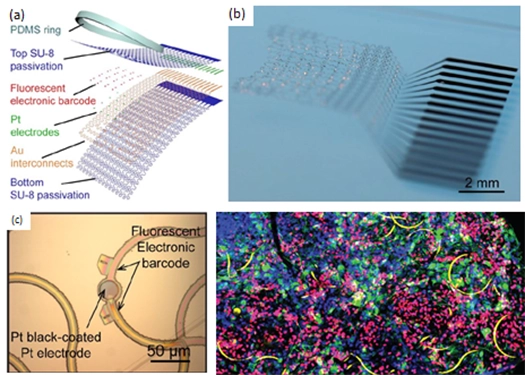Stretchable Mesh Nanoelectronics with "Tissue-Like" Mechanics

A team at the Harvard MRSEC led by Liu has designed and fabricated a "tissue-like" bioelectronic device composed of a distributed array of stretchable electrodes using layouts developed in collaboration with Suo. These devices can be integrated with human brain tissue (in vitro), which are assembled from differentiated human induced pluripotent stem cells. These stretchable devices enable a seamless and non-invasive method of coupling electrodes to human tissues. When combined with brain tissue, the device provides a stable, continuous recording of single-cell action potentials akin to early-stage brain development. A new startup company, Axolt, co-founded by graduate student, Paul Le Floch, and Liu plans to commercialize this research. The development of bioelectronic devices that serve as a brain interface connects to NSF's Big Idea: Future of Work at the Human-Technology Frontier.
Publication:
P. Le Floch, Q. Li, Z. Lin, S. Zhao, R. Lui, K. Tasnim, H. Jiang, and J. Liu, "Stretchable mesh nanoelectronics for three-dimensional single-cell chronic electrophysiology from developing brain organoids," Advanced Materials 34, 2106829 (2022) ![]()
![]()
Jia Liu (Bioengineering) and Zhigang Suo (Material Science & Mechanical Engineering)
2021-2022 Harvard MRSEC (DMR-2011754)
